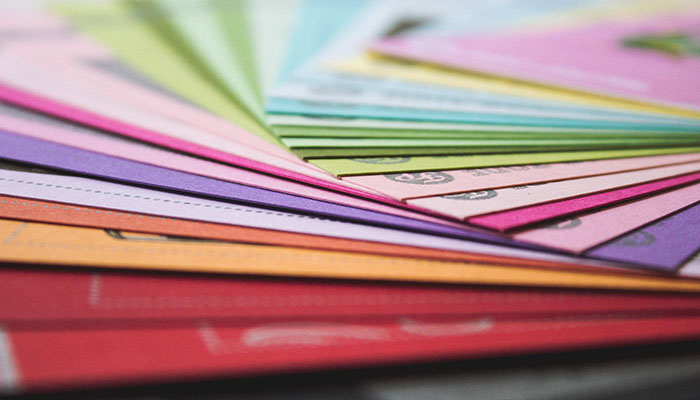
With over 15 years of print experience, Charles Driver, Print Manager of OCG Creative, weighs in on the importance of having quality print marketing materials that represent your brand in a professional light. I have to admit that I’m a bit of a printing snob. Whenever I visit a local place in Reno, the first thing I do is take a look at the print marketing pieces they have lying around. Whether it’s business cards, brochures, or menus—a few things instantly pop into my mind. I can usually tell a company’s marketing budget and how much importance they put on their branding just by looking at their print collateral.
First off, does the piece look like it was created in a bootlegged copy of some office writing program? It’s very easy to tell when a talented designer had a hand in a particular design. You may not even realize it, but behind the scenes, your brain is making assumptions about the design. Subconscious lines are being drawn and everything is measured against a Fibonacci sequence. Go ahead, give yourself credit, you know good design when you see it. It’s colorful, vibrant and draws your eye in just the right path across the surface of the material. A poor design, on the other hand, consists of a basic border around the page, a begrudging splash of color, and generic fonts—looking at you Times New Roman. Poor aesthetic sends a clear message: we spent no time designing this piece. How is this going to represent your business? At the end of the day, it pays to invest in a good graphic designer.
Let’s be honest, glossy paper has been out of fashion for a long time. Just like a car immediately depreciates in value when you drive it off the lot, so does any marketing piece printed on gloss. It loses its luster as soon you pick it up from the printer. Fingerprints and high glare are unattractive in the hands of your target audience. Choosing a matte dull paper type is classy, looks good in all lighting conditions, and leaves room for accents. Want to add a kick? Go heavy, everyone has basic printer paper laying around somewhere but there are other tiers to consider between basic and card stock. Handing out flyers? Try something in a 28lb. Giving out menus? 80lb book makes the presentation a tactile feast and prevents images from bleeding through on the other side.
A trend that is not entirely new, but certainly gaining more traction is using a spot UV coating to highlight certain elements of a printed piece. Spot UV simply means selective gloss coating, and a good designer will offer plenty of unique ways to use it. After discovering this option in printing a few years ago, I’m now seeing this subtle, yet enticing accent in everything I purchase, from merchandise boxes to book covers. While I do see Spot UV enjoying its time in the sun for many more years to come, if you want to get ahead of the curve try a satin or silk coating. If paper type can be considered a tactile feast, then you’ve just been invited to a fancy dinner with steak and lobster when you use satin or silk. While they’re still considered a matte finish, these two coatings have a striking visual quality that is matched only by how they feel in your hands. These pieces demand to be taken home. In the end, design is the first and possibly the most important step in your printing journey. What your piece says about you right now decides whether it gets tossed in the bin or hung on the fridge. Designing your piece for print should be a collaborative and engaging process. The design itself should speak to the overall purpose of that piece. If I’m wandering through your establishment, I’m certainly looking and making judgements about your brand.
Learn more about the printing services that OCG Creative can offer,